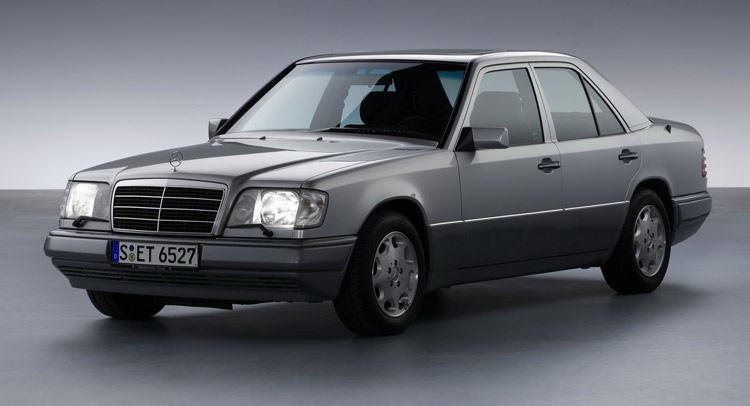Launched in November 1984, the Mercedes-Benz W124, the model that inaugurated the E-Class moniker in 1993, is nearing its 30th anniversary, a fact that many cars from this series appear to ignore.
I’m saying that because I’ve driven two W124s (one of them being my father’s, a 1992 300 TD sedan automatic with more than 300,000 kilometers on the odometer) and I was just stunned by how well they are holding up after all these years.
Acknowledged by Mercedes-Benz as one of its “over-engineered” cars, the W124 series was offered as a Saloon, Estate, Coupé, long-wheelbase version and Convertible. More than 2.7 million units were produced between 1984 and 1997, a testimony to the W124’s success.
Designed under the leadership of Bruno Sacco, the W124 built upon the smaller W201’s styling, featuring clear, sporty lines and a timeless look. At launch, the drag coefficient was 0.29 to 0.30 depending on the model, with later models achieving values as low as 0.26. This also helped lower fuel consumption compared to the preceding series.
Launched with the models 200 D, 250 D, 300 D, 200, 230 E, 260 E, and 300 E, the W124 featured front and rear axle designs already familiar from the W201 series, with Mercedes-Benz bragging about the W124’s outstanding handling characteristics and high level of active safety.
At the time, the W124 was the most diverse lineup in Mercedes’ history. The Estate arrived in September 1985 together with the 4Matic all-wheel drive system, which was available for the six-cylinder models in the model series 124.
In 1987, Mercedes-Benz added the Coupé as the third body variant, which featured an 850mm (33.4in) shorter wheelbase than the Saloon. This enhanced the sporty character of the two-door model, along with the absence of the B-pillar.
In 1989, the W124 received its first facelift, along with a long-wheelbase version developed in collaboration with Binz, which also produced the bodyshell. Available as the 250 D and 260 E, the LWB W124 had a wheelbase increased by 800mm (31.5in) to 3,600mm (141.7in) and featured six-doors and a fully-fledged center seat unit.
In October 1990 Mercedes-Benz launched the 500E range-topping performance model produced in collaboration with Porsche, the first of the W124 series to feature a V8 engine. With 326PS from a 5.0-liter V8, the 500 E was capable of sprinting from 0 to 100 km/h in 5.9 seconds, while top speed was electronically limited to 250 km/h (155 mph).
September 1991 brought a new and final body style, the 300 CE 24 Convertible, based on the Coupé. In June 1993, Mercedes-Benz gave the W124 its second facelift and a new name, E-Class. The E 60 AMG became the top model, powered by 381PS 6.0-liter V8 engine. The Coupé and Convertible also received AMG versions, the E 36 AMG with 272PS from a 3.6-liter engine.
Production of the Saloon ended in August 1995, followed by the Estate in 1996 and Convertible in 1997.
PHOTO GALLERY

























